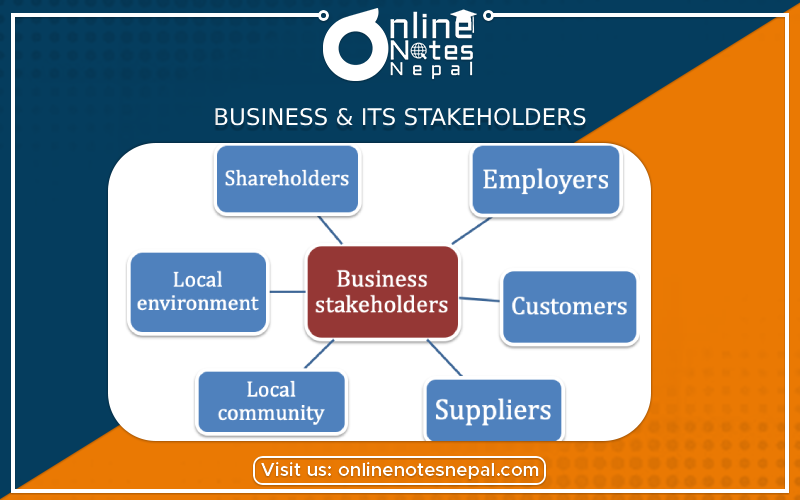Published by: Anu Poudeli
Published date: 17 Jul 2023

The relationship between business and its stakeholders is critical to the success and sustainability of any firm. Individuals or groups with an interest or "stake" in the company's operations, decisions, and outcomes are referred to as stakeholders. Understanding and properly managing these relationships is critical for a company to survive in today's interconnected and socially conscious environment.
Let us delve more into the concept of business and its stakeholders:
Stakeholders :
Stakeholders are a broad set of individuals or entities that include shareholders, consumers, employees, suppliers, creditors, government agencies, local communities, environmental groups, and others. Each stakeholder group has distinct interests and expectations about the success of the business and its impact on various elements of society.
Role of Stockholders :
Stakeholders have an important role in influencing and being influenced by the company's decisions and actions. As an example:
Stakeholder Management is Important:
Successful firms prioritize stakeholder management to ensure that their interests correspond with the company's objectives. Failure to address stakeholder complaints can result in reputational harm, loss of confidence, regulatory problems, and financial consequences. Companies that actively connect with stakeholders, on the other hand, can make a positive impact, establish loyalty, and improve their long-term prospects.
Types of Stakeholder Engagement:
Corporate Social Responsibility (CSR):
CSR is a business strategy in which organizations incorporate social and environmental issues into their operations and interactions with stakeholders. Philanthropy, sustainable practices, ethical sourcing, employee volunteerism, and community development projects are examples of CSR initiatives.
Decision-Making Stakeholders:
Consideration of stakeholder input is required for inclusive decision-making, especially when decisions affect multiple parties. Involving stakeholders in this process can result in better solutions, higher decision acceptance, and a sense of shared ownership.
Balancing Stakeholder Interests:
Stakeholders frequently have competing interests, and firms must find a way to balance these interests in order to achieve long-term success. Cost-cutting tactics, for example, may benefit shareholders but harm employees.
Changing Stakeholder Expectations:
Stakeholder expectations might change over time as a result of changing social, economic, and environmental situations. Businesses must be adaptable and flexible in order to effectively address changing expectations.
In conclusion, stakeholders are critical actors in a business ecosystem, and their interests have a substantial impact on the organization's performance and social impact. Businesses that engage stakeholders proactively and include their viewpoints into decision-making are more likely to flourish in the long run while contributing positively to society and the environment.